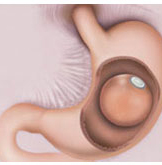Our Services  Surgical Procedures
Surgical Procedures  Obesity Surgery
Obesity Surgery
Who Is Obese?
Obesity is defined as being 20% or more over ideal body weight. There are different ways of defining the severity of obesity. The most common parameter is the Body Mass Index (BMI).
Body Mass Index = weight (kg) / height (m)2
According to Asia-Pacific Classification:
| BMI | |
| Normal weight | 18.5 - 22.9 |
| At risk | > 23.0 |
| Overweight | 23 - 24.9 |
| Obesity I | 25 - 29.9 |
| Obesity II | > 30 |
| Morbid Obesity | > 35 |
How Does Obesity Affect Health?
Obesity is associated with a wide array of adverse health consequences resulting in increased morbidity and reduced life expectancy. Your risk is directly proportional to your level of obesity. The death rate of people with BMI>40 is 2 times greater than those with normal weight. Obesity is associated with many diseases and co-morbidities:
- Type 2 diabetes
- Sleep apnea
- Hypertension
- Gallstone disease
- Dyslipidemia
- Reduced fertility
- Cardiovascular diseases
- Some cancers
- Osteoarthritis
- Psychosocial problems
Who Needs Obesity Surgery?
Diet-exercise-drug therapy programme is of little use in those with morbid obesity (BMI>35) or those with BMI>33 and medical co-morbidities. For them, the only proven value of treatment method in achieving long term weight loss is obesity surgery. In general, we expect patients can lose 1/2 to 2/3 of the excess body weight (actual weight minus ideal weight) in 2 years.
Reducing Weight by Minimally Invasive Surgery

Lap-Band:
Placement of an adjustable silicone band around the proximal stomach is the most common type of obesity surgery being performed. The tightness of the band can be adjusted accordingly and regularly to control the food intake.

Intragastric Balloon:
Endoscopic placement of a large gastric balloon will occupy the proximal part of the stomach, leading to volume reduction and induced gastric fullness. Patients cannot eat freely as they want. The balloon is usually removed within 6 months.
The complication rate of these minimally invasive procedures is low. As surgery is only part of the weight control programme, patients must continue with the diet-exercise regime so as to achieve a healthy and sustainable weight loss.